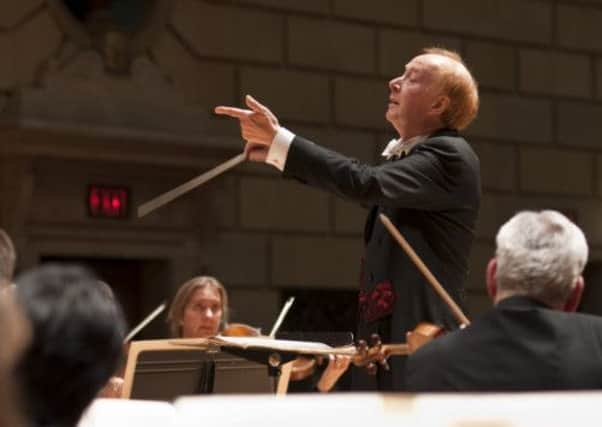Classical: Revealing the secrets of conductor’s art


It wasn’t going well. The music had ground to a virtual standstill, when course director Martyn Brabbins called a halt and asked the orchestra if anyone had a helpful comment for the floundering apprentice. “I’m losing the will to live,” was the instant exasperated response from one RSNO veteran.
Anyone studying conducting is likely to experience such pain and embarrassment at some point, simply because the process inevitably involves the ordeal of getting in front of a real orchestra and learning the hard way.
Advertisement
Hide AdBut to most people, performers as well as listeners, the art of conducting is a mysterious one. That’s what encouraged veteran conductor Christopher Seaman to put pen to paper and write Inside Conducting, which is published in the UK this month.
Seaman was lucky enough to have experienced conductors from the receiving end. He was principal timpanist with the London Philharmonic Orchestra for four years, working under such eminent names as Munch, Horenstein and Boult, before stepping on to the podium himself, most notably in Scotland, where, between 1968 and 1977, he was both assistant, then principal conductor of the BBC Scottish Symphony Orchestra.
“Scotland made me a conductor,” he tells me from his home in Rochester, New York, where, in his 70s, he is now conductor laureate of the Rochester Philharmonic Orchestra, having previously been its longest serving music director.
In particular, though, it was the trainee experience – the two years he spent as assistant conductor at the SSO – that was most valuable to him. “In those two years I was expected to do 40 broadcasts a year, but because James Loughran [the then principal conductor] wasn’t around so much, I actually did about 55 a year,” Seaman recalls. “That was a lot of pressure for a first time job; a true baptism of fire.”
But it paid off, giving Seaman the kind of hands-on experience that led to the reputation he gained in Scotland as someone who could get the job done quickly, well and without fuss.
Much of that he has put to good use, not just in his performing career, but as an audience communicator and mentor to student conductors. The book is an extension of these last two areas. “I had a double audience in mind,” says Seaman. “At Rochester we did a series called ‘Symphony 101’, in which I would talk a bit about some music then demonstrate with the orchestra. We would also have a Q&A session at which the same old questions would arise: ‘how do you rehearse’; or ‘why don’t the players look at you all the time?’” So, in one sense, the book is for the ordinary concert goer who wants to know these answers.
Advertisement
Hide AdSeamen’s other target audience is today’s young conductors, who he comes into direct contact with in the Australian conducting programme he inherited from his predecessor, the legendary Finnish conducting guru Jorma Panula. “It’s a rigorous course that lasts five days, two of which are double rehearsal days with an orchestra. Australia is really serious about fostering new conducting talent,” he says.
It was in an Australian hotel room that the idea of writing things down struck Seaman. “I was thinking along the lines of the old Oxford Companion to Music that lists so many topics alphabetically.” What started as a series of articles on topics such as the Conductor’s Ear and the Conductor and the Instruments, ended up as a book.
Advertisement
Hide Ad“It’s not a rarefied textbook, nor an autobiography,” he insists. And sure enough, he sets out the fundamentals that any budding conductor, amateur or professional can benefit from reading, and which the curious music lover will find equally insightful, often amusing.
Take, for example, the cheeky quote from former New York Times critic Harold Schonberg that opens the chapter on Gender. “As for women conductors, a musician knows when the upbeat starts, because that’s when the slip starts to show.” Who’d be a conductor?
Christopher Seaman will conduct the National Youth Orchestra of Scotland at Aberdeen Music Hall, 31 July, Glasgow Royal Concert Hall, 1 August, and the Sage, Gateshead, 2 August. Inside Conducting by Christopher Seaman is published by Boydell & Brewer, £19.99